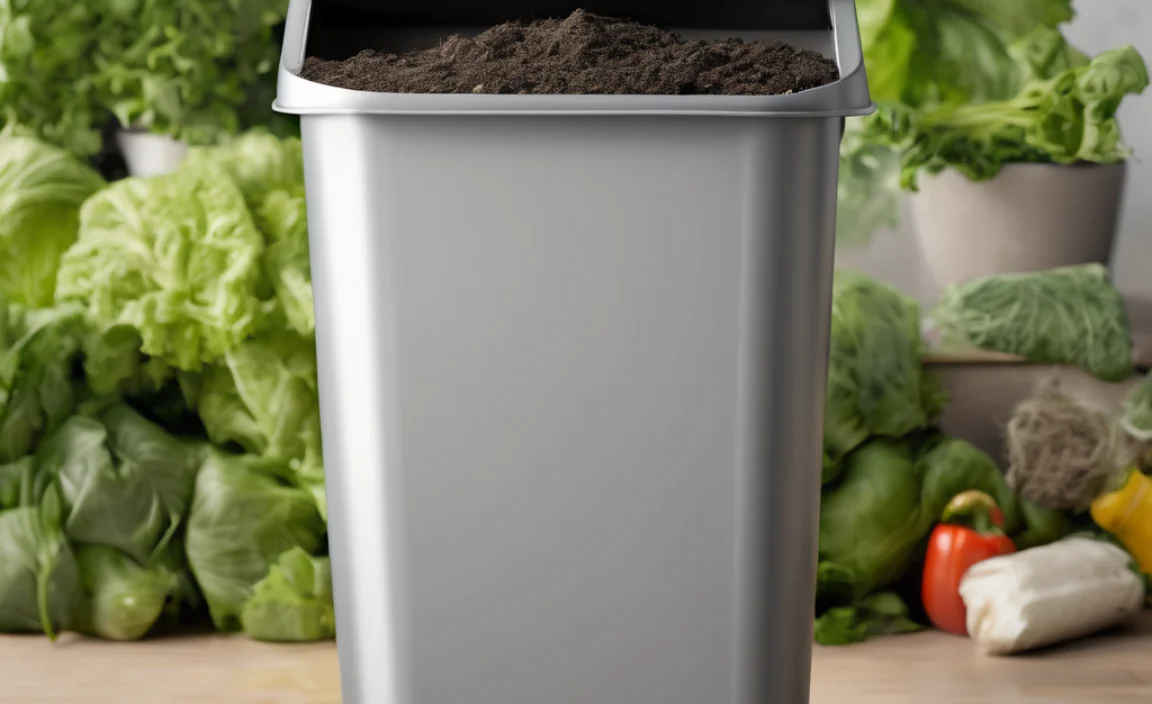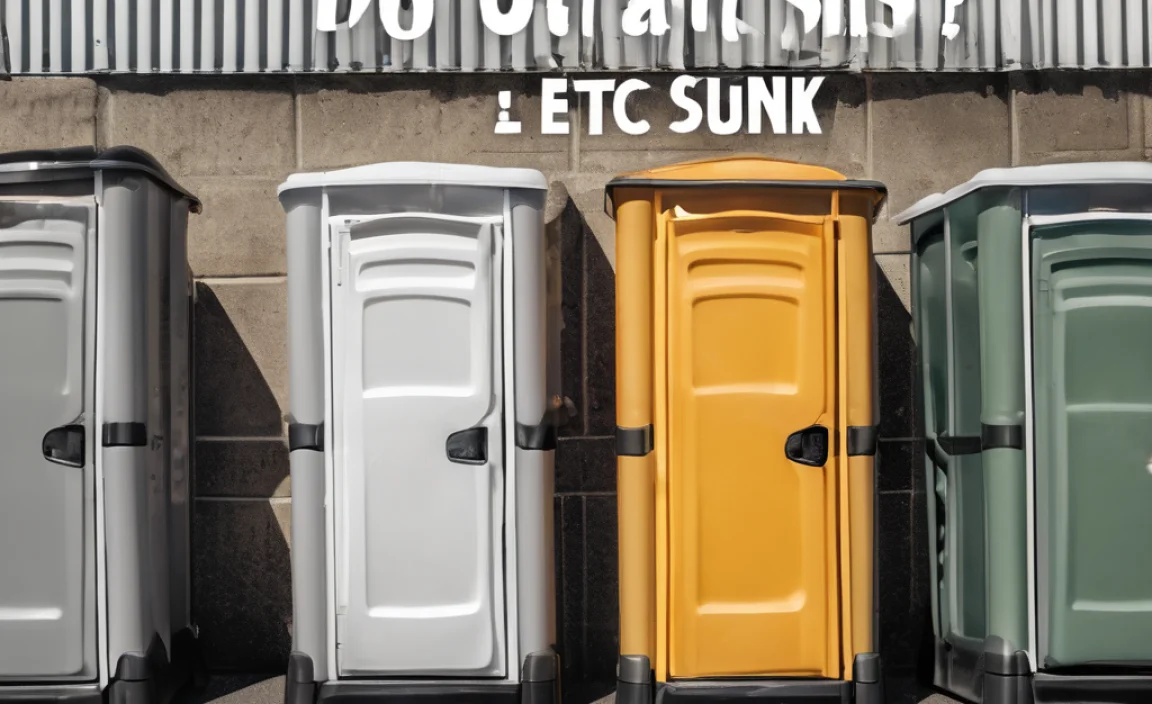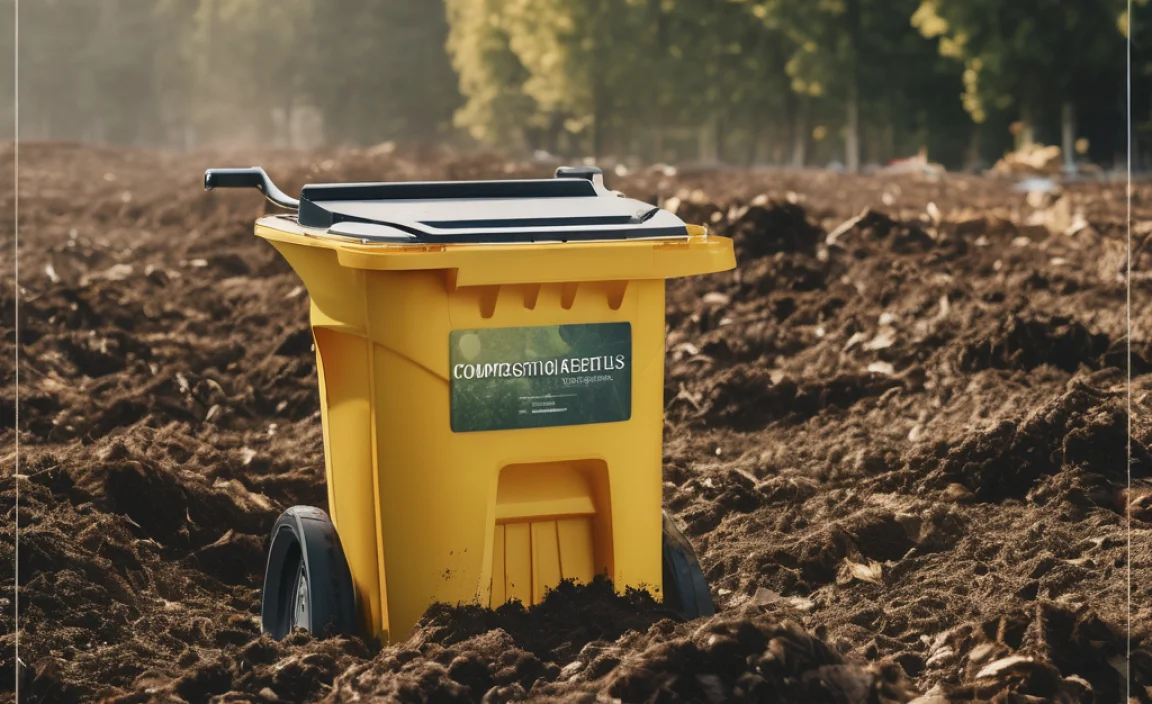Tired of flat tires ruining your off-road adventures? Or maybe you need to power some tools on the go? A good air compressor for your Jeep is a game-changer. Don’t worry if you’re new to this; I’m Troy D Harn from TopChooser, and I’m here to make it super simple. We’ll walk through everything you need to know to pick the perfect one. Get ready to hit the trails with confidence!
Why Your Jeep Needs an Air Compressor: More Than Just Tires
Okay, let’s talk turkey (or should I say, Jeep!). An air compressor might seem like just another gadget, but for Jeep owners, it’s a real adventure essential. For most of us, the first thing that comes to mind is airing up tires after a day on the trails. Dropping your tire pressure for better traction on sand, mud, or rocks is a classic Jeep move. But when it’s time to head home, you need to get them back up to speed, and waiting for hours isn’t fun.
But that’s not all! A portable air compressor can be a lifesaver in other situations. Need to reinflate a paddleboard or air mattress for a camping trip? Done. Have a small air tool you want to use away from your garage, like a tire inflator with a built-in gauge or even a small brad nailer for an impromptu outdoor project? Yep, a good compressor can handle that too.
Think of it as your Jeep’s mobile workshop and emergency service station all rolled into one. It gives you freedom and makes those off-road excursions and camping trips way more enjoyable and convenient. We’ll dive into what makes a compressor perfect for Jeep life next.
Choosing the Right Air Compressor for Your Jeep: Key Factors to Consider
Picking the right air compressor for your Jeep isn’t a one-size-fits-all deal. It really depends on what you plan to do with it. Let’s break down the important stuff so you can make a smart choice without getting lost in technical mumbo jumbo.
1. Portability and Size: Where Will it Live?
Jeeps aren’t exactly known for their cavernous storage space. So, the size and weight of your air compressor are huge considerations. Do you want something small enough to toss into your recovery gear bag, or do you have a bit more space to spare, perhaps in a cargo net or a dedicated storage bin?
- Compact (12V Plug-in): These are generally the most popular for Jeeps. They plug right into your cigarette lighter or auxiliary power outlet. They’re small, lightweight, and easy to store. Perfect for airing up tires and small jobs.
- Mid-Size (Portable Tanks): Some small compressors come with a mini tank. They might be a bit more robust and can provide a more consistent air supply for slightly larger tasks, but they’ll take up more space and weight.
- Larger (Onboard Systems): If you’re a serious off-roader and plan to run air lockers or multiple air tools regularly, you might consider an onboard system. These are permanently mounted in your Jeep, but they’re more complex (and expensive) and likely overkill for most beginners.
2. Airflow Rate (CFM): How Fast Do You Need Air?
This is measured in Cubic Feet per Minute (CFM). Basically, it tells you how much air the compressor can deliver. For us Jeep folks, CFM is super important for how quickly you can air up a tire.
- Tire Inflation: For just airing up tires, a compressor with a CFM rating of around 1.0 to 2.5 CFM is usually sufficient. Higher CFM is better, as it means faster inflation. A 33-inch tire might take a few minutes with a lower CFM unit, perhaps 5-10 minutes, while a higher CFM unit could do it in 2-4 minutes.
- Powering Tools: If you plan to use air tools (even small ones), you’ll need a higher CFM. Check the tool’s requirements, but generally, you’ll want at least 3-5 CFM for most common portable tools.
Tip: Look for the CFM rating at a specific PSI (pounds per square inch). For example, a compressor might say 3.0 CFM @ 90 PSI. Always compare apples to apples.
3. Maximum Pressure (PSI): Can it Do the Job?
PSI tells you the maximum air pressure the compressor can produce. For airing up Jeep tires, you typically need to get them up to around 30-40 PSI. Most compressors designed for automotive use will easily reach this. However, if you’re thinking about powering certain air tools, you might need a higher PSI rating.
- Tire Inflation: 60-150 PSI is more than enough.
- Air Tools: Some tools require 90 PSI or even higher. Make sure your compressor can meet these demands.
4. Duty Cycle: How Long Can it Run?
This is critical for preventing your compressor from overheating. The duty cycle tells you how long the compressor can run continuously before needing a rest. It’s often expressed as a percentage or as a time interval (e.g., “50% duty cycle” or “20 minutes on, 20 minutes off”).
- For Tire Inflation: Most 12V tire inflators are designed for short bursts of use, like running for 10-15 minutes to fill one or two tires. If you’re airing up all four tires after a trail run, you might need to let it cool down briefly between them.
- Demanding Jobs: If you’re using it for longer periods, like powering a tool, look for compressors with a higher duty cycle or those with built-in fans to keep them cool.
5. Power Source: Plug-and-Play or Hardwired?
For Jeep owners, the most common and easiest option is a 12V compressor that plugs into your vehicle’s auxiliary power outlet. This is what most portable tire inflators use.
- 12V Plug-in: Super convenient. Just plug it in and go. However, be mindful of your Jeep’s battery. Don’t run it for extremely long periods with the engine off, as you could drain your battery.
- Battery Powered: Some cordless compressors run on rechargeable batteries, offering ultimate freedom but requiring you to keep the battery charged.
- Onboard Systems: These are usually hardwired into your Jeep’s electrical system and require professional installation.
Safety Note: Always check the amperage draw of your 12V compressor. Most Jeep auxiliary outlets are fused for 10-15 amps, which is usually plenty for a single tire inflator.
6. Features and Extras: What Else Do You Get?
Beyond the basics, what little extras can make your life easier?
- Built-in Gauge: Essential for ensuring you inflate your tires to the correct pressure. Some are analog, others digital. Digital gauges are often more precise.
- LED Light: Super handy for late-night tire changes or campsite fixes.
- Long Power Cord/Hose: Makes it easy to reach all four tires, especially if your Jeep’s power outlet isn’t conveniently located.
- Included Accessories: Look for adapters for different types of inflatables (like balls, air mattresses) if that’s something you’ll use.
- Carrying Case: Keeps everything organized and protected.
By thinking through these points, you can start to narrow down the options and find a compressor that truly fits your Jeep lifestyle!
Top Picks: Best Air Compressors for Jeep Owners in [Current Year]
Alright, now that we know what to look for, let’s talk about some specific compressors that are popular and well-regarded among Jeep owners. These are tried-and-true options that balance performance, portability, and value.
Remember, the “best” really depends on your specific needs, but these are excellent starting points.
1. Best All-Around: ARB SpeedySeal Tyre Inflator
When it comes to off-roading, ARB is a name you’ll see everywhere. Their SpeedySeal Tyre Inflator is a robust, high-performance option that’s built to last. It’s a bit of an investment, but many owners swear by its durability and speed.
- Pros: Extremely durable, fast inflation rate (around 2.0 CFM), comes with a robust chuck that attaches securely, excellent build quality, long hose.
- Cons: Higher price point, can be a bit bulky compared to the smallest units.
- Ideal For: Serious off-roaders who frequently air down and up, and demand reliability.
2. Best Budget-Friendly: VIAIR 0-450 Dual Portable Value Kit
VIAIR is another big player in the portable air compressor world. This kit is fantastic because it offers good power and features at a more accessible price. It’s a popular choice for its solid performance without breaking the bank.
- Pros: Good CFM for its price, built-in pressure gauge, often comes with a sturdy carrying bag, reliable performance for tire inflation and light duty.
- Cons: Might not be as fast as premium options for significantly large tires, build quality is good but not ARB-level rugged.
- Ideal For: Beginners, budget-conscious Jeep owners, and those who need a reliable compressor for occasional trail use.
3. Best Compact & Quick: Smittybilt 2781 Universal Air Compressor
This is a super popular choice for Jeep owners because it’s relatively compact, offers decent power, and is very easy to use. It plugs directly into your 12V outlet and is designed for quick tire inflation.
- Pros: Very compact and lightweight, easy to store, decent CFM for inflating tires quickly (around 1.5 CFM), often includes a carry bag and tire pressure gauge.
- Cons: Duty cycle means you might need to let it cool if airing up many large tires, not ideal for powering tools.
- Ideal For: Daily drivers who hit moderate trails, weekend explorers, and those prioritizing portability.
4. Best Heavy-Duty Portable: Viair 400P Automatic Portable Air Compressor
If you need a bit more oomph and don’t mind a slightly larger unit, the Viair 400P is a fantastic option. It’s known for its ability to handle larger tires and slightly more demanding tasks thanks to its higher duty cycle and CFM.
- Pros: Higher CFM (around 1.5 CFM but can feel faster), can run for longer periods (higher duty cycle), robust build, includes a pressure gauge and LED light.
- Cons: Larger and heavier than compact options, higher price point.
- Ideal For: Jeep owners with larger tires (35″+), those who frequently air down/up, and occasional light tool use.
5. Best Value Combo: KOHLER 12000-00 Portable Cordless Air Compressor
For those who want ultimate freedom from power cords, a cordless option might be appealing. Kohler offers a solid battery-powered compressor that’s great for situations where you might not want to run your engine.
- Pros: Cordless convenience, good power, often comes with a battery and charger, can be used away from the vehicle.
- Cons: Battery life is a consideration, requires keeping the battery charged, can be pricier than plug-in models.
- Ideal For: Campers, overlanders who want versatility, and those who prefer not to have their engine running while inflating.
Comparison Table: Key Specs at a Glance
To help you visualize, here’s a quick comparison of some popular choices:
| Compressor Model | Type | CFM (approximate) | Max PSI (approximate) | Duty Cycle (approximate) | Portability | Price Range |
|---|---|---|---|---|---|---|
| ARB SpeedySeal Tyre Inflator | 12V Plug-in | 2.0 | 120 | Continuous with adequate cool down | Good | $$$ |
| VIAIR 0-450 Dual Portable Value Kit | 12V Plug-in | 1.47 | 150 | 50% @ 100 PSI | Good | $$ |
| Smittybilt 2781 Universal Air Compressor | 12V Plug-in | 1.55 | 100 | 30% @ 30 PSI | Excellent | $ |
| Viair 400P Automatic Portable | 12V Plug-in | 1.52 | 150 | 100% @ 30 PSI / 50% @ 90 PSI | Fair | $$ |
| KOHLER 12000-00 Portable Cordless | Cordless (Battery) | 1.0 | 120 | Varies (battery dependent) | Excellent | $$$ |
Note: Price ranges are relative: $ = Under $75, $$ = $75 – $150, $$$ = Over $150. CFM and duty cycle can vary based on specific conditions and tire sizes. Always check the manufacturer’s specifications for the most accurate details.
How to Use Your Jeep Air Compressor: Step-by-Step Guide
Using a portable air compressor for your Jeep is pretty straightforward, especially for tire inflation. Here’s a simple breakdown of how to get those tires back up to pressure.
Step 1: Gather Your Gear
Make sure you have:
- Your air compressor
- Your Jeep (with the engine potentially running, especially for longer inflation jobs)
- The desired tire pressure (check your Jeep’s doorjamb sticker or owner’s manual)
- A tire pressure gauge (if your compressor doesn’t have a reliable built-in one)
Step 2: Connect the Power
For most 12V compressors, this means plugging the unit’s power cord into your Jeep’s 12V auxiliary power outlet (cigarette lighter port). If you have a cordless model, ensure the battery is charged and installed.
Pro Tip: It’s generally a good idea to have your Jeep’s engine running while using the compressor. This ensures you’re not draining your vehicle’s battery and provides a stable power source.
Step 3: Attach the Air Hose to the Tire
Unwind the compressor’s air hose and screw the chuck onto your Jeep’s tire valve stem. Most compressors have a screw-on type fitting that you simply twist onto the valve until it’s snug. Ensure it’s creating a good seal to avoid air leaks.
Some chucks have a lever to lock them onto the valve. If yours does, flip the lever to secure the connection after screwing it on.
Step 4: Inflate the Tire
Turn on your air compressor. If it has an on/off switch, flip it. If it’s an automatic model, it will start when it senses pressure. Watch the pressure gauge (either on the compressor or your separate gauge) as the tire inflates.
Inflate the tire to slightly above your target pressure. This is because some air will escape when you remove the chuck.
Step 5: Check Tire Pressure
Once you’re close to your target pressure, turn off the compressor. Remove the chuck from the valve stem (be ready for a small puff of air). Immediately check the tire pressure with your gauge.
If it’s a bit low, reattach the chuck and add a little more air. If it’s too high, use the small release valve on most tire chucks (or the back of the tire pressure gauge) to let out a small amount of air, then check again.
Step 6: Repeat for All Tires
Repeat steps 3-5 for each tire that needs inflating. If you’re airing up multiple tires, especially larger ones or if your compressor has a lower duty cycle, you might need to let the compressor cool down for a few minutes between tires to prevent overheating.
Step 7: Stowing Your Compressor
Once all tires are correctly inflated, turn off the compressor, unplug it from the power source, and carefully coil the air hose and power cord

I am passionate about home engineering. I specialize in designing, installing, and maintaining heating, ventilation, and air conditioning systems. My goal is to help people stay comfortable in their homes all year long.





